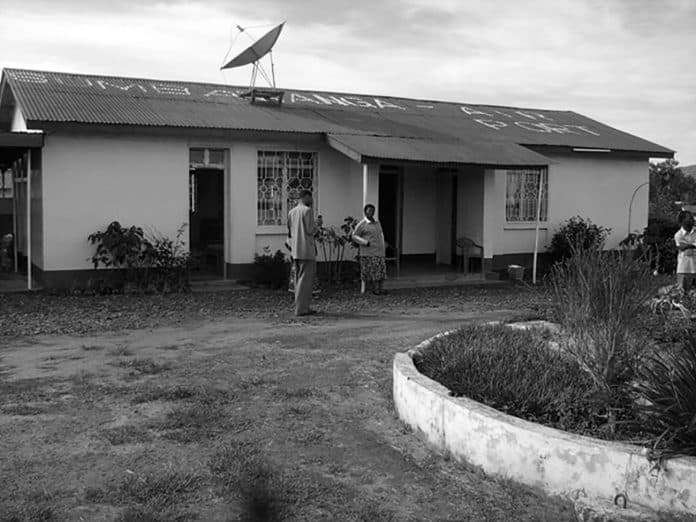Sumbawanga Airport: A Key Infrastructure for Economic Growth in Western Tanzania
Introduction to Sumbawanga Airport
Sumbawanga Airport, located in the Western region of Tanzania, plays a vital role in boosting the economic growth of the area. As the primary gateway to this remote region, the airport provides essential connectivity and infrastructure for trade, tourism, and job creation. This article explores the significance of airports in driving economic growth, the current economic situation in Western Tanzania, the need for a modern airport in Sumbawanga, the features and facilities of Sumbawanga Airport, its impact on tourism and trade, the creation of economic opportunities, the challenges faced during construction and operation, and the future development and expansion plans.
Importance of Airports for Economic Growth
Airports serve as crucial catalysts for economic growth. They provide a gateway for domestic and international trade, attracting investments, promoting tourism, and creating employment opportunities. Airports act as hubs for cargo transportation, enabling the movement of goods and services across regions efficiently. Additionally, airports facilitate business travel, allowing entrepreneurs and investors to connect with potential clients and partners, fostering economic development.
Overview of the Economic Situation in Western Tanzania
Western Tanzania, comprising regions such as Rukwa, Katavi, and Tabora, is blessed with abundant natural resources, including minerals, wildlife, and fertile land. However, due to its remote location and limited transportation infrastructure, the region has faced challenges in fully harnessing its economic potential. The lack of a modern airport has hindered trade, tourism, and investment opportunities, impeding the overall development of the region.
The Need for a Modern Airport in Sumbawanga
Recognizing the importance of transportation infrastructure in driving economic growth, the Tanzanian government embarked on the construction of a modern airport in Sumbawanga. The existing airport, which was inadequate to cope with the growing demand, required upgrading to meet international standards and accommodate larger aircraft. The new Sumbawanga Airport aims to address these limitations and provide the region with a state-of-the-art facility that can cater to the needs of both passengers and cargo.
Features and Facilities of Sumbawanga Airport
Sumbawanga Airport boasts a range of features and facilities that enhance its functionality and efficiency. The runway has been extended to accommodate larger aircraft, allowing for increased passenger and cargo capacity. The airport terminal has been expanded and modernized, providing a comfortable and convenient experience for travelers. Additionally, the airport now offers advanced navigation and communication systems, ensuring safe and efficient operations.
Impact of Sumbawanga Airport on Tourism and Trade
The completion of Sumbawanga Airport has had a significant impact on tourism and trade in the region. The improved accessibility has attracted both domestic and international tourists, drawn to the area’s natural beauty, wildlife, and cultural heritage. The airport serves as a gateway to the renowned Katavi National Park, offering tourists the opportunity to explore its diverse ecosystem. In terms of trade, the airport has facilitated the transportation of goods, connecting Western Tanzania to national and international markets, stimulating economic activity and growth.
Job Creation and Economic Opportunities
Sumbawanga Airport has been a catalyst for job creation and the generation of economic opportunities. The airport’s construction and operation have created employment for local communities, providing them with a sustainable source of income. Additionally, the increased tourism and trade activities have led to the growth of supporting industries such as hospitality, transportation, and retail, further expanding the employment opportunities available in the region.
Challenges Faced During the Construction and Operation of Sumbawanga Airport
The construction and operation of Sumbawanga Airport were not without challenges. The remote location posed logistical difficulties, requiring careful planning and coordination to ensure the timely delivery of construction materials and equipment. Additionally, the airport’s operation required trained personnel and the establishment of maintenance and security protocols. Overcoming these challenges demanded the collaboration of various stakeholders, including government agencies, contractors, and local communities.
Future Developments and Expansion Plans
The completion of Sumbawanga Airport is just the beginning of the region’s development plans. The Tanzanian government recognizes the importance of continued investment in infrastructure to support economic growth. Future developments and expansion plans for Sumbawanga Airport include the construction of additional cargo facilities, the introduction of new domestic and international routes, and the enhancement of passenger services. These initiatives aim to further strengthen the airport’s role in driving economic prosperity in Western Tanzania.
Sumbawanga Airport as a Catalyst for Economic Growth in Western Tanzania
Sumbawanga Airport has emerged as a key infrastructure for economic growth in Western Tanzania. By providing improved connectivity, facilitating trade and tourism, creating employment opportunities, and attracting investments, the airport has unlocked the region’s potential for development. The successful completion of the airport serves as a testament to the Tanzanian government’s commitment to fostering economic growth and prosperity in remote areas. As Sumbawanga Airport continues to evolve and expand, it will undoubtedly play a crucial role in shaping the future of Western Tanzania, driving sustainable economic growth for years to come.
You can explore more articles related to airports in Tanzania by clicking here!
































